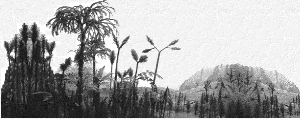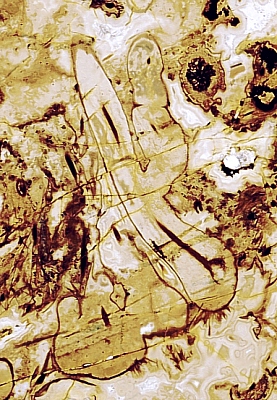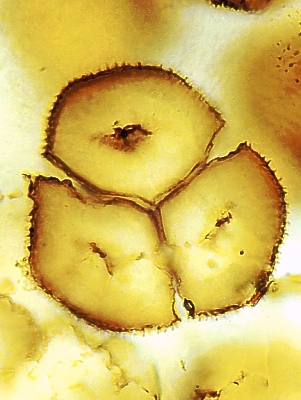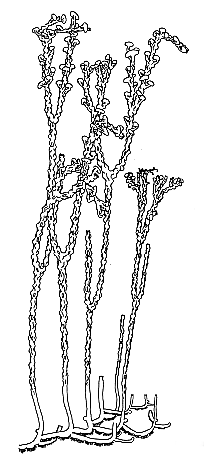

 |
|
 |
 |
Two other species of Rhynie Chert plants are also well known but their systematic position is still discussed controversially. In its morphology and anatomy Horneophyton lignieri is rather similar to Rhynia and Aglaophyton, but differs in having bulbous subterranean rhizomes and the bifurcating sporangia having a central columella of sterile tissue. In extant plants such a columella is only known from mosses. The systematic position of Horneophyton is still unclear. It has recently even been proposed to accommodate Horneophyton in an own group. |  |
| Left: The basal part of a Horneophyton
plant
with rhizome bulbs |
||
| Right: A tetrad of Horneophyton spores. |
 |
Nothia aphylla consists of numerous successive generations of axes. The basal parts of these axes grew subterranean and formed a broadly expanding rhizome system. The upper parts of the axes were bent upwards and these naked aerial axes bifurcated repeatedly. The systematic position of Nothia is still unclear. Very peculiar is the very irregular surface of the aerial axes as is to be seen on the reconstruction (left) and the specimen (right); subterranean axes are smooth. The species is often classified within the Rhyniophytes. However, the partly laterally attached kidney-shaped sporangia might rather suggest an affinity with the Zosterophylls. |  |
| Left: Reconstruction of Nothia aphylla | ||
| Right: Longitudinal section through an aerial
axis of
Nothia aphylla with a sporangium (right) |
| © Forschungsstelle für Paläobotanik, Westfälische Wilhelms-Universität Münster |
April 2000
|